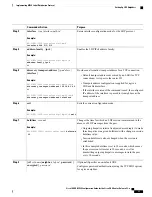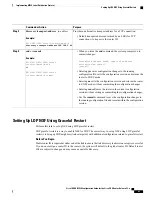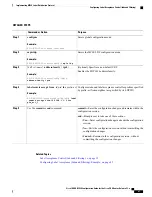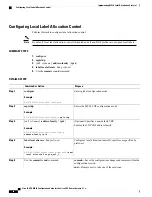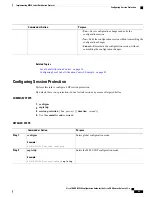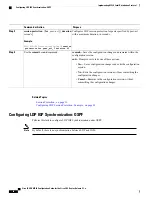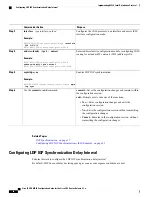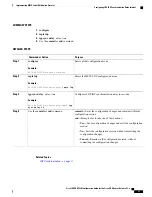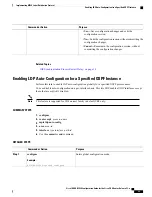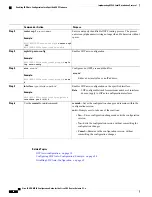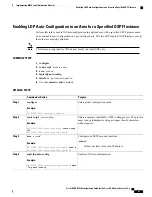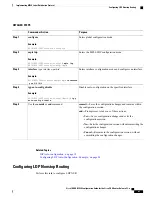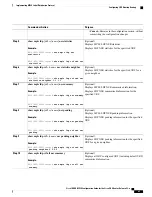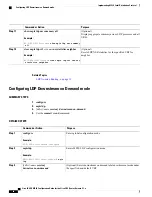
SUMMARY STEPS
1.
configure
2.
router ospf process-name
3.
(Optional)
vrf vrf-name
4.
Use one of the following commands:
•
mpls ldp sync
•
area area-id mpls ldp sync
•
area area-id interface name mpls ldp sync
5.
(Optional) Use one of the following commands:
•
mpls ldp sync
•
area area-id mpls ldp sync
•
area area-id interface name mpls ldp sync
6.
Use the
commit
or
end
command.
7.
(Optional)
show mpls ldp vrf vrf-name ipv4 igp sync
8.
(Optional)
show mpls ldp vrf all ipv4 igp sync
9.
(Optional)
show mpls ldp
{
ipv4
}
igp sync
DETAILED STEPS
Purpose
Command or Action
Enters global configuration mode.
configure
Example:
RP/0/RP0/CPU0:router# configure
Step 1
Identifies the OSPF routing process and enters OSPF
configuration mode.
router ospf process-name
Example:
RP/0/RP0/CPU0:router(config)#
router ospf 100
Step 2
(Optional)
Specifies the non-default VRF.
vrf vrf-name
Example:
RP/0/RP0/CPU0:router(config-ospf)#
vrf red
Step 3
Enables LDP IGP synchronization on an interface.
Use one of the following commands:
Step 4
•
mpls ldp sync
•
area area-id mpls ldp sync
Cisco IOS XR MPLS Configuration Guide for the Cisco CRS Router, Release 5.1.x
51
Implementing MPLS Label Distribution Protocol
Configuring LDP IGP Synchronization: OSPF

